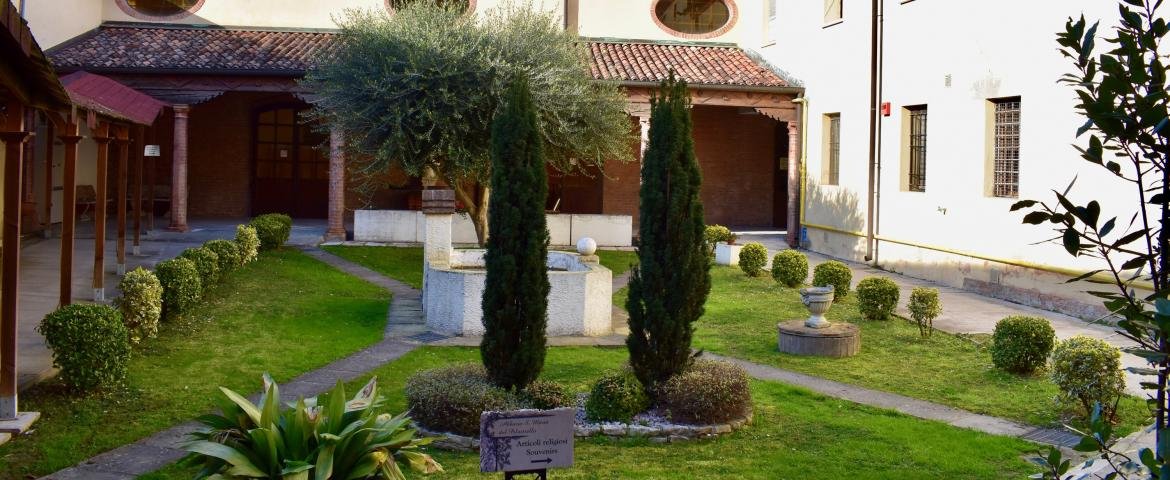
The Black Madonna, linked to the tradition of sacred and miraculous waters
❝The church of the Madonna del Pilastrello in Lendinara evokes a deep heritage of stories and traditions from over the centuries: it is a place that has always been connected to miracles and water. Here, the historical memory of an entire community is expressed in the relationship with the statue of a Black Madonna, who gives blessing in symbiosis with the powers of sacred water.❞
In Lendinara, interesting and meaningful stories are still handed down about the local Marian devotion that binds together the statue of a Black Madonna with ancient ideas about sacred and miraculous waters. During the 16th century these beliefs dictated the construction of the temple of the so-called Madonna del Pilastrello. The sanctuary was completed in 1577 and is still a destination for pilgrims in the first week of September.
One of these stories tells how, long long ago, a carpenter had a seriously ill daughter. One day the Virgin Mary appeared to this very holy man who, listening to his prayers, healed the girl. To thank the Madonna, he carved a statue and placed it on a support, where he remained for a long time. As he aged, the sculpture turned black and, stranger still, those who approached it started to ask for its grace. Miracles began to occur.
Another legend tells how a storm completely destroyed a man's house, while he and his family remained unharmed. Alongside them, only the statue of a Black Madonna was saved, found intact on the branches of a hedge, where a small pillar was built on which to place the sculpture. Later, some friars decided to take the statue to the nearby church but, miraculously, every time it was moved it returned to its "little pillar". It was thus decided to build a chapel in that place and while building it, they discovered that the spring waters that flowed beside it were tinged with red every time someone offended the Madonna or Jesus Christ. At the same time that water possessed the prodigious power to heal those who approached it with real faith. The miraculous spring was then channelled and the water that flowed out was known as "Bagno della Madonna" (Bath of the Madonna).
The term “pilastrello” (pillar) has had different interpretations. Some consider it to be derived from the Venetian dialect and identify it as a term used to indicate the chapiter, or capital. Others think that it refers to the statue placed on a column (or small pillar) before being transferred to the church. Finally, others back the most accredited thesis, according to which the word derives from the Spanish language, since at the beginning of the 16th century several Iberian soldiers were stationed in Lendinara, who would have recognized in the local Madonna different analogies with the Madonna del Pilar of Zaragoza, the patron of Spain.
The sixteenth-century religious building, during the first part of the 19th century, was the object of a radical restoration, which included the addition of the aisles and the reconstruction of the façade, based on a project by don Giacomo Baccari. In the restoration there is a strong reference to the Renaissance style, but also to the architectural tradition of Ferrara, which is the strongest cultural model that is rooted throughout the Polesine area.
By train: the sanctuary is situated about 1,5 km from Lendinara station (railway line Verona-Rovigo).
Opening times for visitors:
Itinerari religiosi del Comune di Lendinara
Where to eat:
we suggest Ristorante Antico Camino (Via Lorenzo Canozio 71, Lendinara; tel. 0425 642288) and Ristorante Due Spade; also interesting the Birrificio Artigianale Rattabrew.
Where to stay:
we recommend B&B Casa Emilio and B&B Il Giglio Veneziano.
Tours and bike & boat rental:
for bike and horse trips and boat tours please refer to the website of Parco Delta del Po.
A typical river village of fishermen is the gateway to the Po Delta’s history of navigation
An ancient Roman port at the centre of river navigation and the mythical "amber road"
Discovering the ancient Roman "piscinae piscariae" among lagoons and casoni in the Delta
The transformation of the Delta into a biodiversity oasis